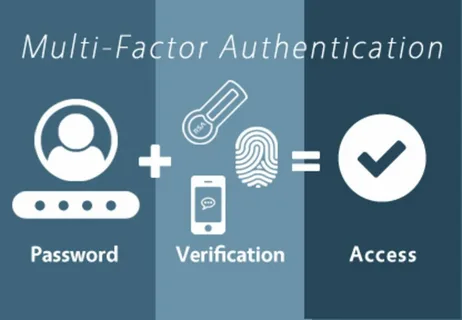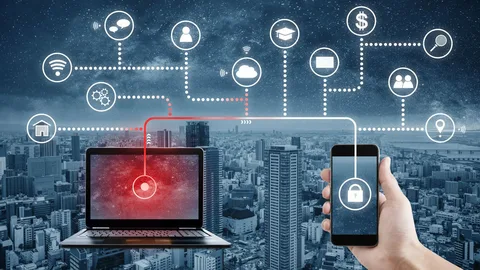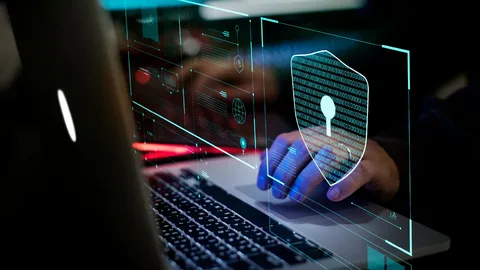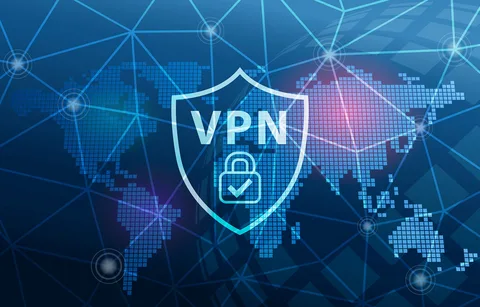
INTRODUCTION:

As remote work becomes more common in today’s modern work force, the challenges of securing remote work environment have become increasingly apparent. One of the key challenges is the vulnerability of end point devices such as laptops, smartphones, and tablets. These devices are often used by remote workers to access corporate networks and sensitive data, making them prime targets for cyber-attacks. Without adequate end point cyber security measures in place, organizations risk exposing their valuable data to unauthorized access and potential breaches.
Another challenge of securing remote work environments is the difficulty in enforcing consistent security practices across a dispersed workforce. When employees work from different locations, it can be challenging to ensure that they are using secure network connections, regularly updating their software, and implementing strong passwords. This decentralized nature of remote work environments makes it essential for organizations to provide clear guidelines and training on security best practices to their remote workforce, as well as regularly monitoring and auditing their adherence to these practices.
Understanding the Importance of End point Security
End point security plays a critical role in the overall security posture of organizations, particularly in the context of remote work. An endpoint is any device that connects to a corporate network, such as laptops, smartphones, or tablets. These endpoints serve as entry points for potential threats, making them an attractive target for hackers. Protecting these endpoints is crucial to prevent unauthorized access, data breaches, and the spread of malware.
One key keyword in end point security is vulnerability. The increasing number of remote workers has expanded the attack surface, exposing organizations to a higher risk of security vulnerabilities. Remote workers may connect their devices to unsecured or public networks, making them more susceptible to cyberattacks. Furthermore, employees who work remotely may unknowingly invite threats by using unapproved software or failing to keep their devices updated with the latest security patches. Therefore, organizations must implement robust endpoint security measures, such as firewalls, antivirus software, and regular vulnerability assessments, to mitigate these risks and safeguard their networks and data.
Best Practices for Securing Remote Networks
The first step in ensuring the security of remote networks is to establish a strong and reliable firewall. A firewall acts as a barrier between the internal network and the external threats, preventing unauthorized access and filtering out potentially harmful traffic. It is essential to configure the firewall with strict rules and restrictions, allowing only necessary and trusted connections. Regular monitoring and updates are also crucial to keep the firewall up to date with the latest security patches and vulnerabilities.
In addition to a robust firewall, implementing a virtual private network (VPN) is another best practice for securing remote networks. A VPN encrypts the connection between the remote worker’s device and the company’s network, ensuring that sensitive data transmitted over the internet remains secure and protected. By utilizing a VPN, remote workers can securely access company resources and applications without the risk of interception or unauthorized access. It is important to select a reputable VPN provider and use strong authentication methods, such as multi-factor authentication, to add an extra layer of security to the remote network.
The Role of Multi-Factor Authentication in Remote Work Environment

Cyber security has become a growing concern in the age of remote work, as traditional security measures may no longer be sufficient to protect sensitive data and systems. One key tool in strengthening remote work security is multi-factor authentication (MFA). MFA adds an extra layer of protection by requiring users to provide multiple credentials to verify their identity. This typically involves combining something the user knows, such as a password, with something the user has, such as a unique code sent to a mobile device or a physical token. By implementing MFA, organizations can significantly reduce the risk of unauthorized access to remote work environments.
The role of MFA in remote work security cannot be overstated. With the increasing sophistication of cyber threats, relying solely on passwords can leave remote workers vulnerable to brute-force attacks, credential theft, or other password-related breaches. By requiring multiple factors for authentication, MFA adds an additional barrier that cyber criminals would need to overcome to gain unauthorized access. This significantly enhances the security posture of remote work environments, making it more difficult for attackers to breach systems or compromise sensitive data. Moreover, the use of MFA encourages users to adopt strong, unique passwords, further mitigating the risks associated with password-based attacks.
Mitigating the Risks of Phishing Attacks in Remote Work Environment

Phishing attacks pose a significant threat to remote work environments, where employees may be more susceptible to falling victim to these schemes. With the rise in remote work, cybercriminals have adapted their tactics to exploit the vulnerabilities of individuals working outside traditional office settings. Phishing attacks typically involve the use of disguised emails, messages, or websites that trick users into revealing sensitive information or downloading malicious software. These attacks can have severe consequences, including financial loss, data breaches, and damage to a company’s reputation.
To mitigate the risks of phishing attacks in remote work, organizations must prioritize education and awareness. Providing comprehensive training to employees about the different types of phishing attacks, common red flags to watch out for, and best practices for avoiding them can go a long way in minimizing the success rate of these attacks.
Additionally, implementing strong email filters and spam detection tools can help identify and block suspicious emails before they reach employees’ inboxes. Regularly updating security software and patches is also crucial in preventing malware from infiltrating remote work systems. By fostering a culture of security and equipping employees with the necessary knowledge and tools, organizations can significantly reduce the risks associated with phishing attacks in remote work environments.
Data Protection Strategies for Remote Workers
In the age of remote work, data protection strategies are paramount for ensuring the security of sensitive information. With employees accessing company data from various remote locations, it is essential to implement robust measures to safeguard against data breaches and unauthorized access. One key aspect of data protection is the use of strong and unique passwords. Remote workers should be encouraged to create complex passwords that are difficult to guess and to avoid reusing passwords across multiple accounts. Additionally, the use of password managers can help employees securely store and manage their passwords, further enhancing data protection.
In addition to strong passwords, encryption is another critical data protection strategy for remote workers. All data transmitted between employees and the company’s servers should be encrypted to prevent interception and unauthorized access. This involves utilizing protocols such as HTTPS for website communication and VPNs (Virtual Private Networks) for secure remote access to corporate networks. Encryption ensures that even if data is intercepted, it remains unreadable and unusable to unauthorized individuals. Implementing encryption protocols across all communication channels is essential to maintain data privacy and protect against potential cyber threats.
Securing Cloud-Based Collaboration Tools for Remote Teams

As remote work becomes more prevalent, organizations are increasingly relying on cloud-based collaboration tools to facilitate communication and collaboration among teams. However, the use of these tools also introduces security risks that must be addressed to ensure the protection of sensitive data and maintain the integrity of the organization’s infrastructure.
One of the key challenges in securing cloud-based collaboration tools is the need to manage access and permissions effectively. With multiple team members accessing and sharing files, it is crucial to implement robust user authentication measures to prevent unauthorized access and ensure that only authorized individuals can view or modify sensitive information. Implementing strong password policies, enforcing regular password changes, and utilizing multi-factor authentication are effective measures to mitigate the risk of unauthorized access.
Additionally, regular monitoring and auditing of user activity can help detect and address any potential security breaches or suspicious behavior promptly.
Furthermore, encryption plays a vital role in securing data stored and transmitted through cloud-based collaboration tools. Encrypting data ensures that even if it is intercepted or accessed by unauthorized individuals, it remains unreadable and unusable. Organizations should implement end-to-end encryption to protect data at rest and in transit, as well as ensure that encryption keys are stored securely and only accessible to authorized personnel. Regular audits and assessments of encryption protocols and algorithms should also be conducted to stay updated with evolving security standards and best practices.
So, by effectively managing access and permissions and implementing robust user authentication measures, organizations can minimize the risk of unauthorized access to sensitive information. Additionally, employing strong encryption protocols ensures the confidentiality and integrity of data shared through these tools. Continued vigilance and regular assessments are necessary to address emerging security threats and safeguard remote teams’ collaboration processes.
The Role of VPNs in Remote Work Environment

In today’s increasingly digital landscape, the role of VPNs in remote work security cannot be overstated. A VPN, or Virtual Private Network, creates an encrypted tunnel between an employee’s device and the corporate network, ensuring a secure connection regardless of the location. This technology is particularly crucial for remote workers as it helps protect sensitive data by preventing unauthorized access and intercepting potential cyber threats.
By using a VPN, remote workers can establish a secure connection to their organization’s network, even when accessing it from a public Wi-Fi network or other untrusted networks. This is especially important considering the rise in cyber attacks targeting remote workers. VPNs provide an added layer of security by encrypting data transmitted between the employee’s device and the corporate network, effectively shielding sensitive information from prying eyes. Additionally, VPNs can help bypass geographic restrictions or censorship, allowing remote workers to access resources that might otherwise be inaccessible due to location or network limitations.
Overall, the role of VPNs in remote work security is becoming increasingly vital in today’s digital landscape. It enables remote workers to securely access corporate resources and protect sensitive data, mitigating the risks associated with remote work environments. Implementing and encouraging the use of VPNs is an essential step in creating a secure remote work culture and safeguarding organizations from potential cyber threats.
Building a Security Culture in a Remote Work Environment

Building a strong security culture in a remote work environment is of utmost importance to ensure the protection of sensitive data and the overall cybersecurity of the organization. The first step in building this culture is to educate employees about the potential risks and best practices for security. Providing comprehensive training sessions on topics such as identifying phishing attacks, using strong passwords, and ensuring the security of personal devices used for remote work can help employees understand the gravity of the situation and the role they play in maintaining a secure work environment.
Furthermore, implementing regular communication channels that provide up-to-date information about the latest security threats and measures can help foster a sense of responsibility towards cyber security. Encouraging employees to actively participate in reporting any suspicious activities or vulnerabilities they encounter is crucial in building a culture of vigilance. Additionally, establishing clear guidelines and policies regarding the use of company devices, networks, and collaboration tools can help enforce security practices and ensure consistent adherence to security protocols.
Ultimately, building a security culture in a remote work environment requires consistent effort, effective communication, and the active engagement of every employee in protecting the organization’s assets from potential cybersecurity threats.
Prompt Response and Recovery in Remote Work Environment

As remote work continues to become the norm for many organizations, prompt response and recovery strategies must adapt to the unique challenges posed by this new working environment. With employees scattered across different locations and accessing company resources from various devices, the potential for security incidents and breaches increases. It is crucial for businesses to establish robust incident response plans that address these specific concerns.
One key aspect of incident response in the age of remote work is the need for prompt detection and identification of security incidents. Traditional methods of monitoring networks and systems may not be as effective in a remote setting. As a result, organizations must invest in advanced threat detection tools and technologies that can identify indicators of compromise across a wide range of endpoints. Additionally, regular security audits and vulnerability assessments should be conducted to proactively identify and address any potential weaknesses in the remote work infrastructure. By promptly detecting incidents and vulnerabilities, businesses can minimize the impact of security breaches and reduce downtime in the event of an attack.
FAQ’s
What are the challenges of securing remote work environment?
The challenges of securing remote work environments include ensuring the security of endpoints, protecting against phishing attacks, securing cloud-based collaboration tools, and establishing a security culture among remote workers.
Why is endpoint security important in remote work?
Endpoint security is important in remote work because it helps protect devices such as laptops and smartphones from cyber threats. It ensures that these endpoints are secure and have the necessary security measures in place to prevent unauthorized access and data breaches.
What are the best practices for securing remote networks?
Some best practices for securing remote networks include using strong and unique passwords, regularly updating software and firmware, implementing firewalls and antivirus software, and using virtual private networks (VPNs) to encrypt data transmission.
How does multi-factor authentication enhance remote work security?
Multi-factor authentication adds an extra layer of security by requiring users to provide multiple forms of identification, such as a password and a unique code sent to their mobile device. This helps prevent unauthorized access to remote systems and data.
How can the risks of phishing attacks be mitigated in remote work?
To mitigate the risks of phishing attacks in remote work, employees should be educated about phishing techniques and how to identify suspicious emails or websites. Additionally, implementing email filters, using anti-phishing software, and regularly updating security protocols can help protect against phishing attacks.
What are some data protection strategies for remote workers?
Some data protection strategies for remote workers include regularly backing up important data, using encryption to secure sensitive information, implementing strong access controls, and using secure file transfer protocols.
How can cloud-based collaboration tools be secured for remote teams?
Cloud-based collaboration tools can be secured for remote teams by ensuring that the tools have strong security measures in place, such as encryption and user authentication. Regularly updating these tools and monitoring user activity can also help enhance security.
What role do VPNs play in remote work security?
VPNs play a crucial role in remote work security by encrypting data transmitted between remote devices and the corporate network. This helps to protect sensitive information from being intercepted or accessed by unauthorized individuals.
How can a security culture be built in a remote work environment?
Building a security culture in a remote work environment involves promoting awareness and education about cybersecurity best practices, providing training on remote work security, and fostering a culture of accountability and responsibility among remote workers.
How can incident response and recovery be effectively handled in the age of remote work?
To effectively handle incident response and recovery in the age of remote work, organizations should have a well-defined incident response plan in place, conduct regular training and drills, establish communication channels for reporting incidents, and ensure remote workers are aware of the procedures to follow in the event of a security incident.















One reply on “Cyber Security In The Age Of Remote Work Environment”
[…] Cybersecurity is becoming a top priority for both individuals and businesses in the current digital era. With the rise of sophisticated cyber threats, traditional security measures are simply no longer sufficient to safeguard sensitive information. As a result, the integration of artificial intelligence (AI) in cyber security has emerged as a game-changing solution.AI offers the potential to enhance cyber security by providing real-time threat detection and response capabilities. Through advanced machine learning algorithms, AI systems can continuously analyze massive amounts of data, identifying patterns, anomalies, and potential security breaches. This allows for proactive identification and mitigation of threats, significantly reducing response time and the potential impact of attacks. Additionally, AI can automate various security tasks, such as threat analysis and incident response, freeing up valuable human resources and improving overall efficiency in cyber security operations. Through the integration of AI, organizations can fortify their defenses and stay one step ahead of cybercriminals, ensuring the protection of critical data and systems. For detailed knowledge about Cyber Security and AI check out this amazing article HERE. […]